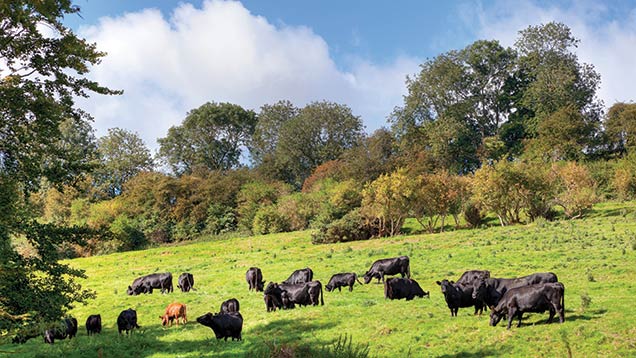Don’t lose tax advantages on let land
 ©ING
©ING Broadly speaking, those letting out agricultural property under a tenancy granted after September 1995 will benefit from 100% relief from inheritance tax (IHT) because of the availability of agricultural property relief (APR), provided that the property has been owned for at least seven years.
This is in contrast to property that has been farmed “in hand”, which only needs to have been owned for two years to achieve the same relief.
Therefore, for many landowners who may have owned (and indeed actively farmed) their farms for many years, there may at first glance be no restriction in the IHT relief available on letting out rather than farming their farm.
See also: Farmers and landlords air views in heated tenancy debate
There are, however, several key reasons why landowners will wish to continue to be seen as actively farming rather than simply letting out land·
- Possible VAT advantages from continuing to trade (and therefore remain VAT registered), which may not be available if a farm is let.
- If property is let out, then capital gains tax (CGT) reliefs can be restricted or lost if the property is sold. This can be hugely detrimental if there is development value on the property.
- Many commentators see APR as a vulnerable relief and HMRC’s scrutiny into APR claims is growing. Keeping land farmed in-hand increases the likelihood that property will qualify for business property relief (BPR), which is seen as less vulnerable. BPR is also potentially a more valuable relief as it covers development/hope value on assets.
- Farmhouses will cease to qualify for APR if the associated land/buildings are let out and the landowner remains living in the house.
The tax implications from the above points are sufficient to make many landowners, particularly historically active farmers who wish to step back from day-to-day work, extremely nervous of letting land on formal tenancies.
As a result, share/contract farming agreements can end up being a “means to an end”. In too many cases, the landowner/farmer will feel obliged to retain too much involvement in the running of the land, often in the face of old age or failing health.
On the other hand, if there is no long-term security of tenure, the contractor/grazier will not fully commit to improving or investing in the property. The result is a stalemate, driven partly by tax concerns that have increased as property values have risen.
Further tax incentives proposed by the Tenant Farmers Association (TFA) include treating agricultural letting income as qualifying earnings for pension contributions and other tax benefits.
However, these would reverse the government’s trend of reducing the level of pension contributions from which taxpayers (particularly higher-rate taxpayers) can benefit.
From a commercial perspective, I fully endorse the TFA’s promotion of increased length of tenancies to 10 years or longer.
The arrangements are not working well enough for too many landowners and tenants alike.
However, unless there were a clear commitment from HMRC not to heavily penalise landowners for letting out land compared with their current status for the various taxes, there is little chance of consensus on the matter that could give rise to real change – the tax stakes are simply too high.
However, if HMRC can support the commercial reasons behind the need for change, at a time when the need for competitiveness in UK agriculture has never been greater, this would be a major step forward for the sector.

